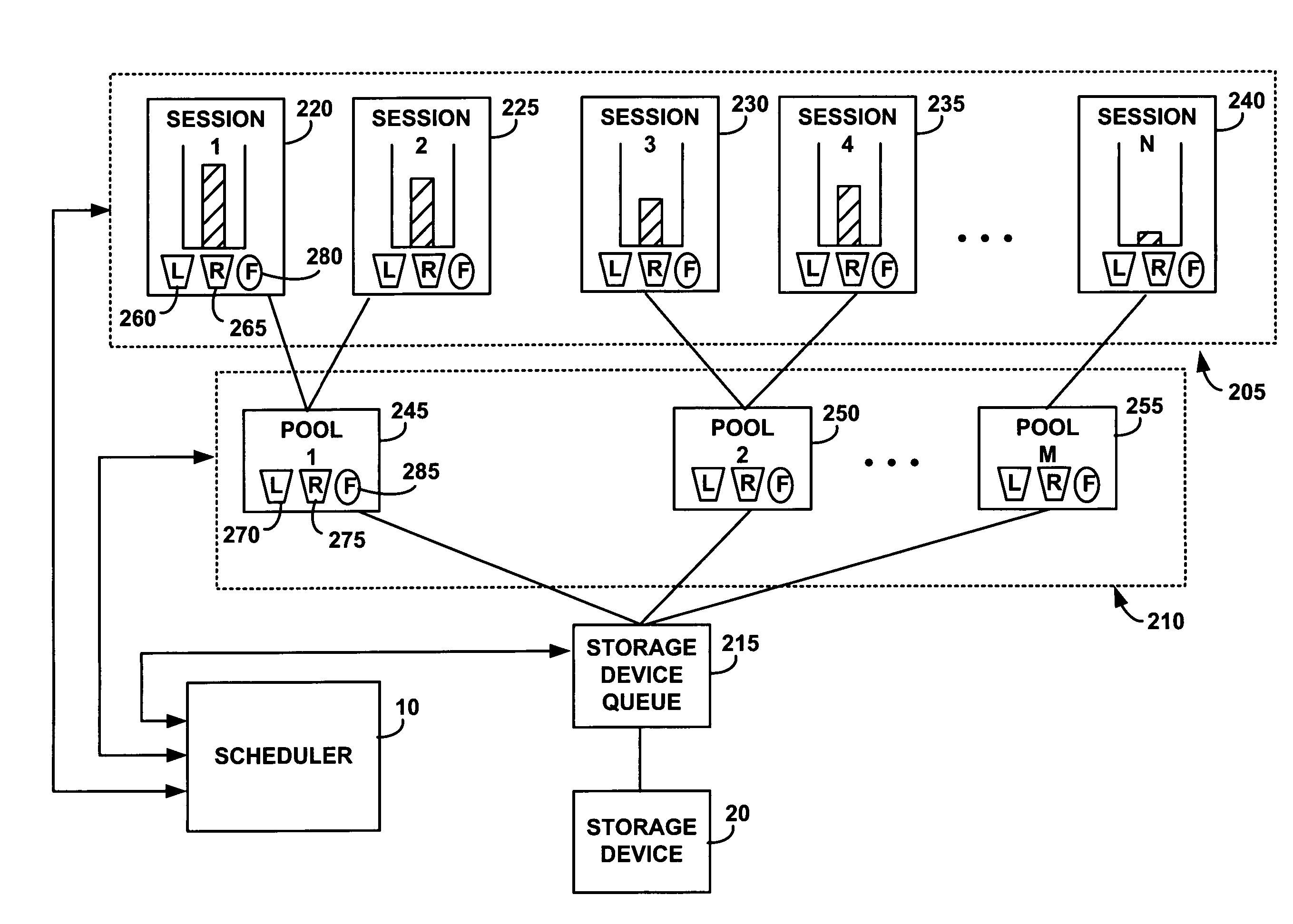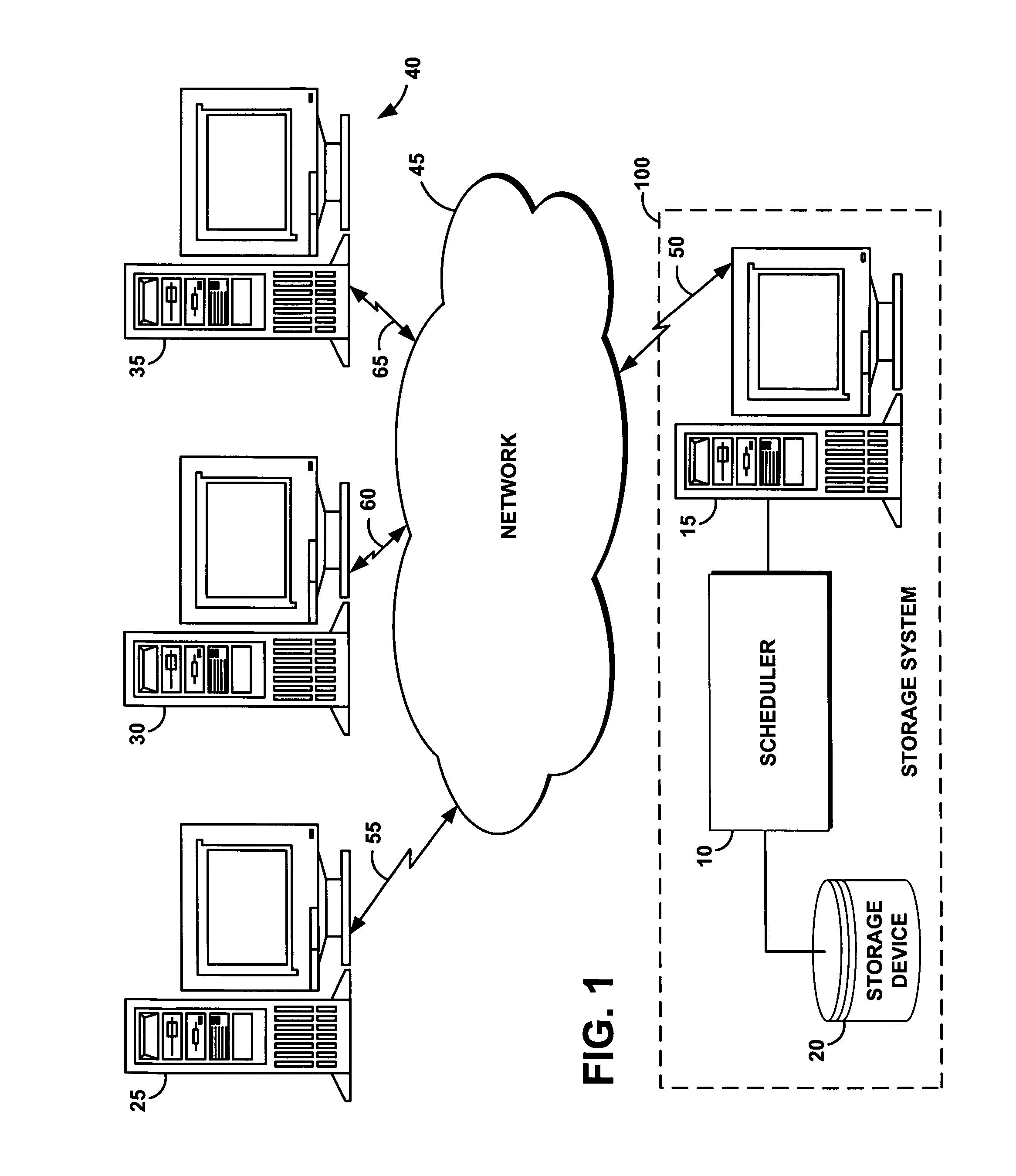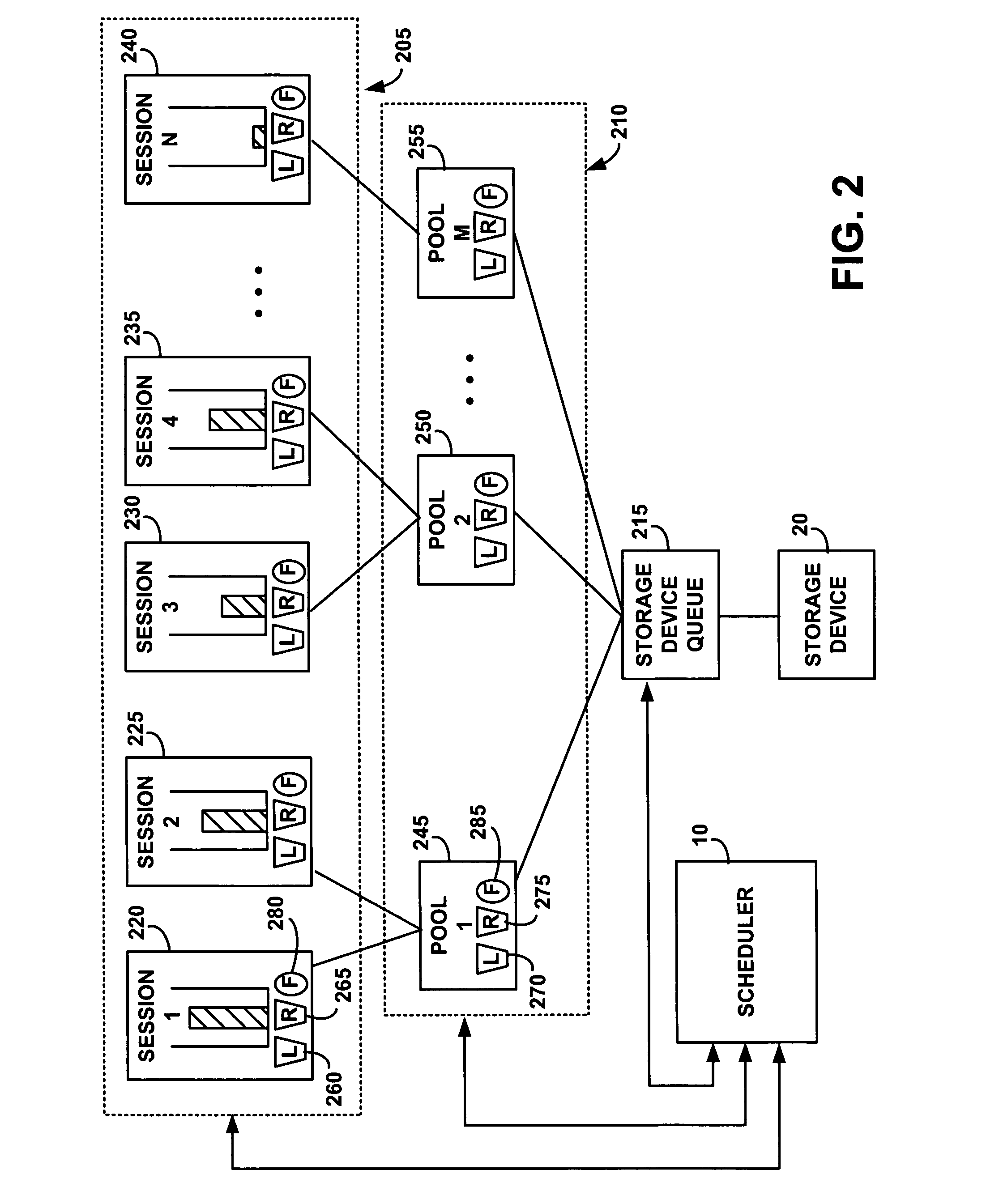System and method for managing storage system performance as a resource
a storage system and resource technology, applied in the field of data processing, can solve problems such as performance degradation of transaction processing applications, unexpected interference between applications with potentially divergent performance requirements, and missing deadlines of media players
- Summary
- Abstract
- Description
- Claims
- Application Information
AI Technical Summary
Benefits of technology
Problems solved by technology
Method used
Image
Examples
Embodiment Construction
[0030] The following definitions and explanations provide background information pertaining to the technical field of the present invention, and are intended to facilitate the understanding of the present invention without limiting its scope:
[0031] Deadline: A time by which an I / O is required to be executed for an associated session and pool to receive a predetermined reserve.
[0032] Pool: A long-term virtual entity that an administrator generates to manage a resource such as I / Os for an application. The administrator controls the amount of resources allocated for the pool.
[0033] Release time: A time after which an I / O can be executed without an associated session and pool exceeding a predetermined limit.
[0034] Session: a short-term virtual entity that an application process creates from within a pool to manage a resource such as one stream of I / Os.
[0035]FIG. 1 portrays an exemplary overall environment in which a system, a service, a computer program product, and an associated m...
PUM
 Login to View More
Login to View More Abstract
Description
Claims
Application Information
 Login to View More
Login to View More - R&D
- Intellectual Property
- Life Sciences
- Materials
- Tech Scout
- Unparalleled Data Quality
- Higher Quality Content
- 60% Fewer Hallucinations
Browse by: Latest US Patents, China's latest patents, Technical Efficacy Thesaurus, Application Domain, Technology Topic, Popular Technical Reports.
© 2025 PatSnap. All rights reserved.Legal|Privacy policy|Modern Slavery Act Transparency Statement|Sitemap|About US| Contact US: help@patsnap.com



